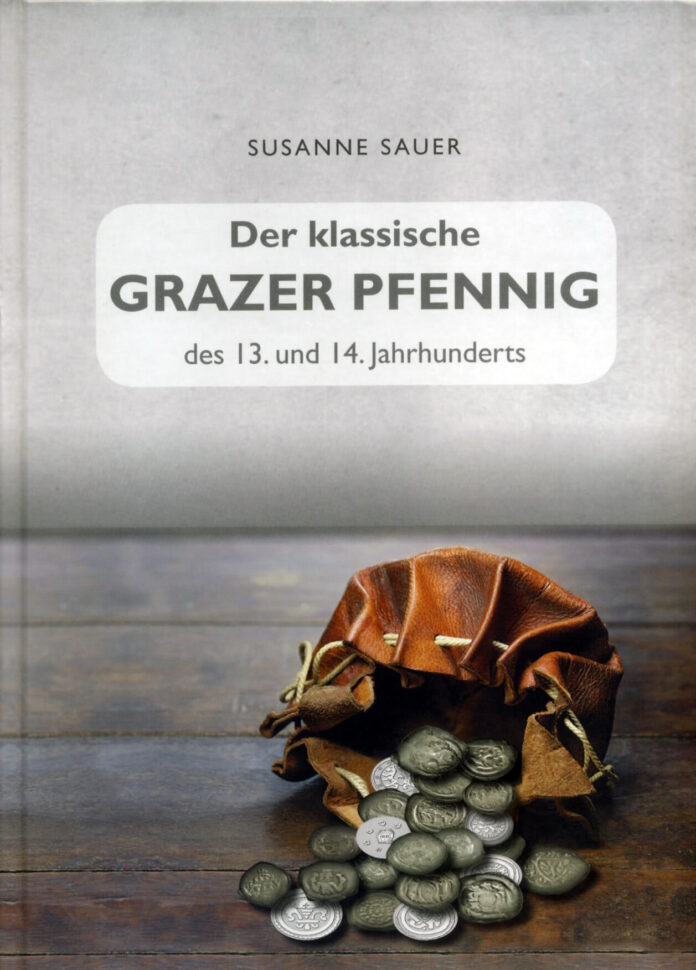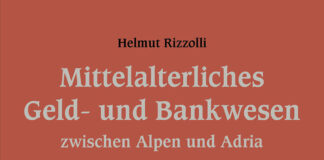
They appear to be messengers from an era that is inaccessible to us, these medieval pfennigs with their incredibly rich imagery, which can only be understood by a few experts. The animals and coats of arms, the people with attributes that we can hardly understand, the hybrid creatures, ornaments and buildings – they fascinate us without revealing their secret at first sight. For those who want to know more about them, Susanne Sauer’s book offers an overview of all types of the Graz pfennig and gives insight into the interpretation of these objects.
A Book for Scholars, Dealers AND Collectors
Anyone who is familiar with the numismatic sphere of Vienna, is a member of the Österreichische Numismatische Gesellschaft (Austrian Numismatic Society) or who – at least –regularly attends the most important coin fairs, knows who Dr Susanne Sauer is.
As the daughter of coin dealer Peter Sauer, she already came into contact with numismatics at an early age, she was fascinated by all the things a coin can tell us and studied numismatics at the Vienna Institute for Numismatics. Today she is one of the people in charge of her father’s coin shop.
She combines her enthusiasm for numismatics with a sound academic education and knows from her own experience how a catalogue has to look like so that dealers and collectors will love to reference it and scholars can use it as a basis for further research. Thus, her publication bearing the title “Der klassische Grazer Pfennig des 13. und 14. Jahrhunderts” (The classic Graz pfennig of the 13th and 14th century) is intended to be used by everyone interested in this coin type.
The clear structure and the systematic approach will be appreciated by all those who want to identify a coin as quickly as possible and who might even want to write a short commentary on it. Therefore, the book is an ideal tool for coin dealers.
Collectors will be pleased about the fact that Susanne Sauer provides a commentary on every single coin type enabling the proud owner of a piece to understand the historical and art historical background of the coin.
Scholars will use Susanne Sauer’s brilliantly presented material and her summaries on old literature as a basis for their own research and might come to more far-reaching results. After all, the author understands her work as “an invitation for further discussions on Austrian medieval numismatics, which, unfortunately, only proceed at a slow pace these days.”
An Incredibly Rich Imagery
The topic is interesting enough to carry out research on it: the time spectrum of Graz pfennigs ranges from Frederick II the Quarrelsome (1230-1246) to Rudolf IV (1358-1365). The author identifies, describes and comments on the 143 types of Graz pfennigs she knows of. These are far more than the 133 coin types listed by Bernhard Koch in 1994 in his Corpus Nummorum Austriacorum because Susanne Sauer doubts or cannot prove that 13 of these 133 coin types were actually minted in Graz. In an annex, the author deals with these types in detail.
However, Susanne Sauer did not only publish a simple catalogue. She explores the imagery and tries to interpret every depiction. This isn’t an easy but surely an important task. When miners and monks are depicted on coins of the High Middle Ages and references to Florence’s floral emblem as used on the Fiorino d’oro, we may well wonder what mentality was behind all this.
A Wealth of Facts Presented in a Useful Manner
The book is consistently and clearly structured. Firstly, the author discusses the historical context and summarises in one chapter each her research on the mints responsible for the objects and on metrology. This is followed by a commentary on the coin types. In this part, the author decided to show drawings of the depictions in order to establish a visual basis for her interpretation. In the actual catalogue section, a photo of a well-preserved specimen can be seen next to the drawing. This is important because there have been several cases in numismatics where users of a drawing mistook the drawer’s interpretation for reality and weren’t able to associate better preserved specimens with the described and drawn pieces. Furthermore, the catalogue lists the weights including their variations and concentrations, the locations and literature citations.
This is supplemented by a list of coin hoards containing Graz pfennigs, by a type atlas – a handy tool for all those who need to identify coins – an extensive concordance for previously mentioned coin types and – last but not least – a comprehensive bibliography.
Thanks to an English abstract, one can easily use the work even without German language skills.
If You Are Interested in the Middle Ages…
…you cannot do without buying the book. And if you want to write a book on medieval times in the near future, you should take a close look at the work. The way in which Dr Susanne Sauer masterfully meets the needs of all spheres of numismatics is to be taken as an example.
The book was self-published and can be directly ordered at the Sauer coin shop at their Ebay web shop or at their web shop at MA-Shops.



